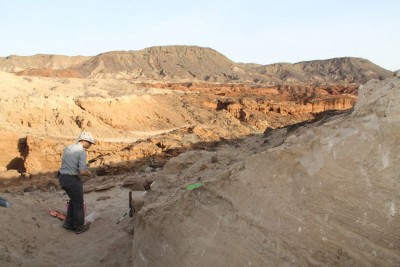New archaeological investigations at the Lothagam harpoon site at Lake Turkana
Abstract

The Lothagam harpoon site in north-west Kenya's Lake Turkana Basin provides a stratified Holocene sequence capturing changes in African fisher-hunter-gatherer strategies through a series of subtle and dramatic climate shifts (Figure 1). The site rose to archaeological prominence following Robbins's 1965–1966 excavations, which yielded sizeable lithic and ceramic assemblages and one of the largest collections of Early Holocene human remains from Eastern Africa (Robbins 1974; Angel et al. 1980).
Authors
- Steven Goldstein
Department of Archaeology, Max Planck Institute for the Science of Human History, Kahlaische Strasse 10, Jena D-07745, Germany - Elisabeth Hildebrand
Department of Anthropology, Stony Brook University, Circle Road, SBS Building S-501, Stony Brook, NY 11794, USA; Turkana Basin Institute, Stony Brook University, N507A Social & Behavioral Science, Stony Brook, NY 11794, USA - Michael Storozum
Earth Observatory of Singapore, Nanyang Technological University, 50 Nanyang Avenue, Block N2-01a-15, Singapore - Elizabeth Sawchuk
Department of Anthropology, Stony Brook University, Circle Road, SBS Building S-501, Stony Brook, NY 11794, USA - Jason Lewis
Department of Anthropology, Stony Brook University, Circle Road, SBS Building S-501, Stony Brook, NY 11794, USA; Turkana Basin Institute, Stony Brook University, N507A Social & Behavioral Science, Stony Brook, NY 11794, USA - Cecilia Ngugi
Division of Archaeology, National Museums of Kenya, P.O. Box 40658, Nairobi, Kenya - Lawrence H. Robbins
Department of Anthropology, Michigan State University, 655 Auditorium Road, East Lansing, MI 48824, USA

